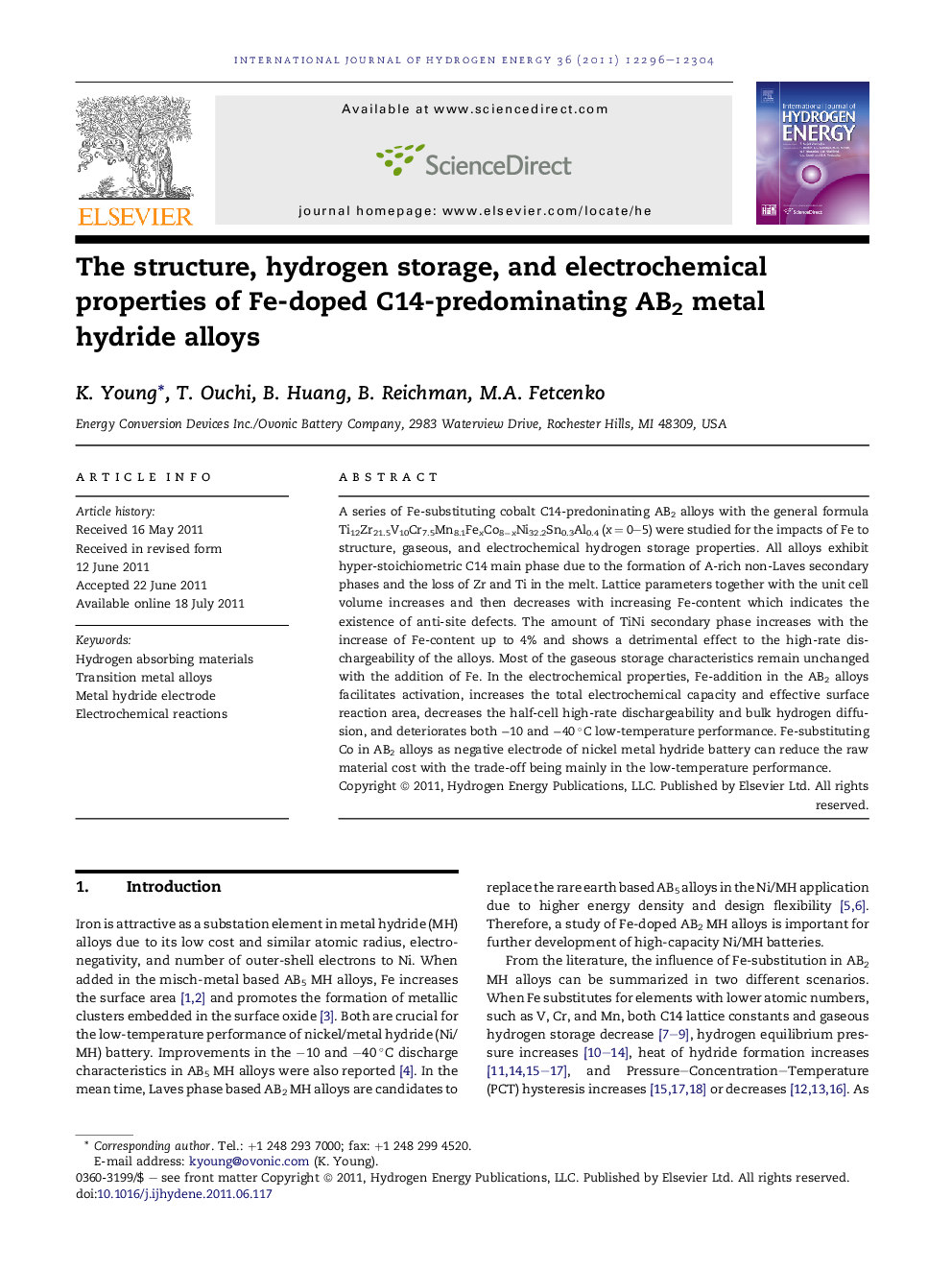| Article ID | Journal | Published Year | Pages | File Type |
|---|---|---|---|---|
| 1282430 | International Journal of Hydrogen Energy | 2011 | 9 Pages |
A series of Fe-substituting cobalt C14-predoninating AB2 alloys with the general formula Ti12Zr21.5V10Cr7.5Mn8.1FexCo8−xNi32.2Sn0.3Al0.4 (x = 0–5) were studied for the impacts of Fe to structure, gaseous, and electrochemical hydrogen storage properties. All alloys exhibit hyper-stoichiometric C14 main phase due to the formation of A-rich non-Laves secondary phases and the loss of Zr and Ti in the melt. Lattice parameters together with the unit cell volume increases and then decreases with increasing Fe-content which indicates the existence of anti-site defects. The amount of TiNi secondary phase increases with the increase of Fe-content up to 4% and shows a detrimental effect to the high-rate dischargeability of the alloys. Most of the gaseous storage characteristics remain unchanged with the addition of Fe. In the electrochemical properties, Fe-addition in the AB2 alloys facilitates activation, increases the total electrochemical capacity and effective surface reaction area, decreases the half-cell high-rate dischargeability and bulk hydrogen diffusion, and deteriorates both −10 and −40 °C low-temperature performance. Fe-substituting Co in AB2 alloys as negative electrode of nickel metal hydride battery can reduce the raw material cost with the trade-off being mainly in the low-temperature performance.
► Anti-site defects are found in the hyper-stoichiometric AB2 MH alloys with higher Fe-contents. ► TiNi secondary phase is found to hinder both the bulk transportation of hydrogen and surface reaction. ► Fe-substituting Co in AB2 alloys can reduce the raw material cost with the only trade-off in low-temperature performance.
